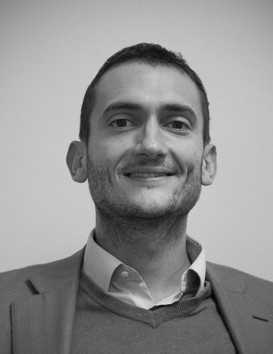In the early 1990s, a series of initiatives were set about fighting organised crime on a European level. However, the killing of “ndrangheta” members in the German city of Duisburg in 2007 acted as a wake-up call. Europe started to realise the mafia wasn’t just an Italian problem.
Since then, EU legislation has “borrowed” instruments from Italy to fight these serious crimes, such as proposed regulation for the mutual recognition of asset freezing and confiscation orders. Moreover, last year 20 EU member states agreed to establish a European Public Prosecutor Office (EPPO) that, under certain conditions, will deal with fraud and other crimes affecting the Union's financial interests.
Besides the disruption to criminal networks, there is also a need to improve prevention policies. In this context, the EU is now scientifically analysing how organised crime and terrorism recruit their members.
The study is part of the project Proton, launched in 2016 and involving 21 international partners. It is led by the Transcrime research centre of the Università Cattolica del Sacro Cuore in Milan. In particular, the Italian researchers have focused on the profile of 11,000 convicted mafia members and 200,000 crimes, thanks to new data provided by the Italian Ministry of Justice.
Francesco Calderoni, associate professor of criminology at the Cattolica university, describes the main results of the project so far and looks forward to the next phase, where researchers will create a virtual society to test a set of different criminal action.

F.Calderoni
What are the main mafia criminal profiles that you have identified through the research?
“Mafiosi” have a criminal career of 14 years on average, they are versatile and don’t focus on specific offences. For the first time, the research has clearly shown that there are different career patterns. For example, members who start young, in their early 20s, are generally more violent, while people who are better educated tend to commit offences in late adulthood.
How different is mafia recruitment from other criminal organisations?
Notoriously, recruitment relies on parents, kinship and friendship. But this may take different forms across different mafias. Blood ties are crucial for recruitment into the “ndrangheta” [organised crime group from Calabria, ed. note], as many criminals are born of associates and share the same family names. In contrast, “cosa nostra” [mafia organisation from Sicily, ed. note] tries to balance the influence of the natural family. “Pentiti” [criminals who repent and collaborate with judges to help investigations, ed. note], suggest that at a certain time there was a rule against admitting more than two members of the same blood family. Recruitment therefore relies on broader networks, selecting individuals who are from the same background and neighbourhood, but not necessarily related to mafiosi. Surprisingly, from this perspective, there are more similarities than differences with other forms of organised crime.
What is the next phase of the research?
We will use the results of the studies to create separate simulations of recruitment into organised crime and terrorism. They work as miniature worlds, with agents acting and making decisions. We aim to recreate how people join criminal or terrorist networks.
Agent-based models are ideal for testing complex situations that cannot be investigated in the real world. They allow us to see the long-term impact of specific policies to fight against mafia organisations.
Although it’s too early to provide details about the simulations, I can say that we may test policies, such as the removal of parental authority from mafia members, to break the family links and thus prevent children who are born to mafia families from taking up mafia values.
We may also test the best tactics for law enforcement: for example, should the police target criminal groups randomly, one group after the other, or simultaneously?
How important has cooperation with the other consortium partners been, in order to complete this first chapter of the research (the project will end in September 2019)?
The first year of the project was divided into three areas: organised crime, terrorism and cybercrime. Within each area, different partners conducted distinct research, just as we did for the careers of the mafiosi. For example, our Dutch colleagues analysed how drug traffickers operate at key logistical nodes such as airports, seaports in the Netherlands; Israeli colleagues studied the characteristics of terrorism in Israel. Fraunhofer Foundation focused on the online presence of the Hells Angels motorcycle gangs in Europe. Moreover, together with IBM, Fraunhofer studied the ISIL narrative on Twitter and YouTube, used by the so-called Islamic State for their propaganda. It was challenging to address such a wide range of topics and perspectives, especially within a 15-month timeframe, but we managed to do it.
youris.com provides its content to all media free of charge. We would appreciate if you could acknowledge youris.com as the source of the content.